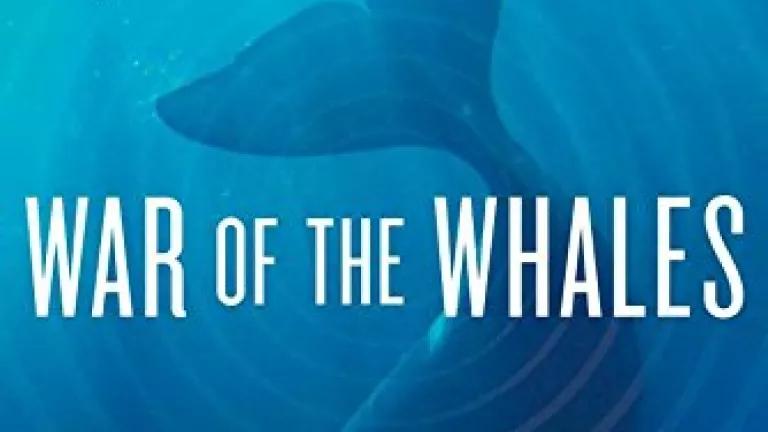
On March 15, 2000, a seldom-seen species of deep-diving whales began stranding along the coast of Great Abaco Island, in the northern Bahamas. That event—the first naval sonar mortalities to be witnessed by humans—and the struggle that followed to determine what had happened and hold the U.S. Navy to account, is the subject of the new release War of the Whales, by Josh Horwitz. It's an Amazon "Book of the Month" for July, it's been splendidly reviewed, it's suspenseful and moving and fascinating in equal measure, and I would strongly recommend it to readers of this blog even if my dear colleague Joel Reynolds weren’t a prominent figure in the story. (Full disclosure: I also figure in the text, albeit secondarily.)
Much of the story is devoted to Ken Balcomb, a devoted researcher and ex-Navy man who’d spent most of the previous decade scouring the waters off Abaco for beaked whales. One of the first beaked whale strandings that day occurred in his backyard: it is a piece of serendipity that haunts the book. When Balcomb is told by a fisherman, after fighting for hours to coax the first whale back to sea, that another one has turned up a few miles off, he understands that something has gone terribly wrong.
Over the ensuing days, he dashes around the islands trying to save whales, studies their bodies on the beaches, and in a gruesomely funny scene inveigles a local lobsterman to preserve the evidence in a restaurant freezer. And when he hears about other stranded animals—two minke whales from across the Providence Channel, a beaked whale mother and calf found on Grand Bahama—with more reports coming in, he decides on a hunch to call an old colleague at the Navy. Then he takes up a small float plane to search for carcasses on the outlying islands and cays, and spots a Navy destroyer.
What soon emerges is a profile in the conscience of a scientist. Balcomb comes to believe that the Navy may be responsible, that the powerful mid-frequency sonar systems designed to hunt submarines over hundreds of squares miles of ocean may have injured his population of beaked whales and driven them ashore. He is intent on a full investigation and begins worrying, not without reason, that the Navy is soft-pedaling the process. As he begins to push from inside, Balcomb is increasingly cold-shouldered by colleagues and then frozen out of the investigation; after he reluctantly decides to join a press conference to tell the public what he knows, he becomes persona non grata. But he persists, at a cost to his reputation, his personal life, and his sense of self, torn by an abiding love for the Navy.
War of the Whales is partly about what makes people like Ken Balcomb become agents for change in the world. One would like to think that scientists, with their commitment to truth, would be among those who naturally take up the mantle. Yet science is an inherently conservative enterprise. Like all of our professions, it has an economy, an organization, a loose form of hierarchy; and it compels those who practice it to speak in bloodless language even about matters of life and death. The same is true of the law, of course, and scholars like Martha Nussbaum and jurists like Sonia Sotomayor have raised all kinds of hackles by insisting on a place for empathy in the courtroom.
Balcomb, it turns out, was motivated by truth, but also in no small part by empathy. As he said in a wonderful recent article on the book in Psychology Today, his “deciding moment” came during that first stranding in the Bahamas. His first thought was to seize the opportunity and conduct hearing tests on this rarely encountered whale, while it was still alive; his second was to “collect the specimen” because it would surely die; but almost immediately, as he smelled the whale’s breath and touched it and understood it had a right to live, he became committed to its survival.
For me, the emotional climax of War of the Whales is an epiphany, experienced by Balcomb as he reads an abstruse government report, about what happened that day in the Bahamas—from the whales’ point of view. The animals are hit by pressure waves as they dive, try to fight through the “funneled noise” near the water’s surface, become disoriented; some head for shore and turn food for sharks in the shallows. In a way, the book replicates the burst of empathy that Balcomb had on the beach. Stranding investigations are about cause and effect. But in showing us, based on the best available evidence, what the Navy’s sonar transit might have been like for the whales that suffered through it, the book reminds us of the dignity of the individual animal.
